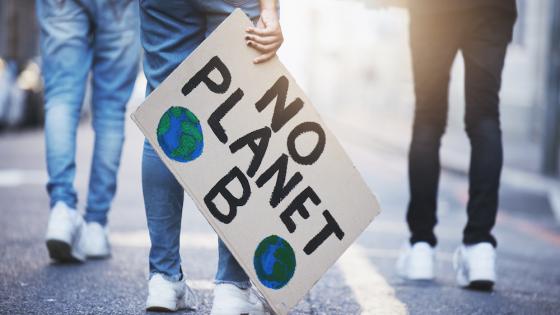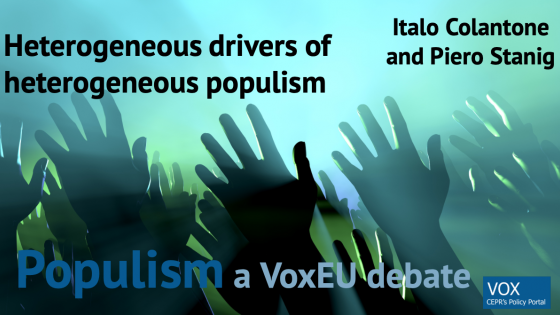In his bestselling book Sapiens: A brief history of humankind, Yuval Noah Harari highlights that humans are fundamentally story-telling animals. The narratives we tell each other are instrumental in shaping our understanding of and support for institutions and policies. This is true in particular for complex issues like addressing climate change, with its interplay of immediate and delayed causes and effects. Climate policies such as taxing emissions or banning gas-powered cars and heating are often hard to implement (Dechezleprêtre et al. 2022), have far-reaching distributional impacts, and provoke strong emotional reactions. Hence, how narratives frame those policies and the relevant actors can fundamentally shape opposition or support for specific institutions or policies.
Economists are also increasingly recognising the power of narratives in shaping preferences and actions, inspired by the pioneering work of Shiller (2017). Recent research on narrative economics provides compelling causal evidence of the influence of specific narratives in diverse areas ranging from racism and COVID-19 to monetary policy (e.g. Esposito et al. 2023, Bursztyn et al. 2023, Andre et al. 2021). These have prompted economists to start exploring how they can study narratives in a more systematic way (Bénabou et al. 2020, Eliaz and Spiegler 2020). However, the balance between capturing the nuances of narratives and the practicalities of efficient measurement in large datasets remains an unresolved challenge.
Measuring narratives in large text data sets with the character-role narrative framework
In our ongoing work (Gehring and Grigoletto 2023), we argue that there is an intuitive and scalable way to measure narratives. Let’s take the following statement by climate activist Greta Thunberg in The New Statesman (October 2022) as an illustrative example of what we mean by narrative.
Global greenhouse emissions are still on the rise, oil production is soaring and energy companies are making sky-high profits while countless people struggle to pay their bills. [...] A critical mass of people – especially younger people – are demanding change and will no longer tolerate the procrastination, denial and complacency that created this state of emergency. (Greta Thunberg)
Intuitively or on purpose, Thunberg combines key features of human storytelling to create a compelling narrative that frames her argument according to her rhetorical goals. First, her narrative has a clear topic, climate change (greenhouse emissions). Second, the core part of the narrative is its characters: corporations (energy companies), the poor (countless people), and civil society (the younger people). Third, these characters are depicted as one of three archetypical roles: hero, villain, and victim. This so-called drama triangle represents the essential set of roles in human story-telling that can be used to frame characters according to the intended message of a narrative.
More complex narratives (like Thunberg’s) frame a topic by providing a temporal or causal sequence between two or more characters in the three essential roles of hero, villain, or victim; simple narratives are fragments of those sequences that feature only a topic and one character-role (see Figure 1).
Figure 1 A narrative consists of a topic, its characters, and their roles as hero, villain, or victim
These simple narratives are extremely common in most forms of human communication ranging from oral exchange to newspapers and social media. It is useful to distinguish two types of characters: human characters – in the context of climate change for instance corporations, government, and civil society – and instrument characters – for instance emission pricing, bans/subsidies, and green or nuclear technology.
An advantage of this character-role narrative framework is that while we apply it to analyse climate change policies, it can be easily adapted and applied to any context. Using large language models, which are fine-tuned to a specific topic through limited additional human annotation, it can be scaled up to large text data sets. We provide an empirical pipeline and Python-based package that allow researchers to easily adapt and apply the framework to their topic of interest. For a pre-selected topic and set of characters, this pipeline yields a prediction if a particular character role is present in a text segment (e.g. a tweet, paragraph, article).
Analysing US climate change policies on Twitter
Our analysis of more than 800,000 tweets from the US in 2010–2021 reveals significant shifts in climate change policy narratives. There is a rise in narratives that portray the US government as a villain, while corporations are increasingly depicted as heroes taking action against climate change. While emission pricing would probably score as the favourite instrument-hero narrative among economists, green-technology-hero narratives are several magnitudes more frequent on social media. We also observe a resurgence in nuclear-technology-hero narratives, while hero narratives around banning specific technologies or nature-based solutions remain niche.
Figure 2 shows the type of predictions and measurements of narratives that our framework delivers. The matrix depicts 18 character roles and combinations thereof within one tweet. Take corporations-hero as an example, a character role that became much more frequent over time. The diagonal element shows that in about a quarter of cases, this is a stand-alone narrative. Moving within the row reveals that in more than half of all cases, corporations-hero appears jointly with green-tech-hero. Hence, these are increasingly popular narratives framing corporations as the hero in the fight against climate change because of their role in advancing and implementing green technology.
Figure 2 The frequency of character-role combinations in climate policy narratives
Another interesting example is narrative combinations including the emerging economies (BRICS) as a character, most often China and India. Narratives framing the BRICS as a hero are in more than 70% of cases related to their role in advancing green technology. More frequent, however, are narratives depicting the BRICS as a villain. These are often simple, populist narratives shifting blame to a non-US actor. BRICS-villain narratives tend to be combined with arguments that US government actions are useless because of growing BRICS emissions while imposing excessive costs on US citizens (government-villain, the-poor-victim).
What makes a narrative go viral?
Our framework and its predictions allow us to study systematically which character-role combinations are most likely to make a narrative go viral. Using the features of Twitter, we classify popularity using ‘Likes’ as a low-cost action of signalling agreement with a narrative, ‘Retweets’ as a stronger signal where a user contributes to the contagiousness of a narrative, and ‘Replies’ as an active engagement with a narrative in a conversation.
Figure 3 illustrates several patterns, which we validate using a regression framework. Overall, there is heterogeneity across character roles and there are differences across the three dimensions of virality. Instrument-character-based narratives are relatively more successful in sparking follow-up conversations. However, on average, there is a clear pattern suggesting that simple narratives featuring human characters and villain roles are significantly more likely to go viral.
Figure 3 The virality of climate policy narratives by character roles
The most viral character role, civil society as the hero, is an example of such a human-character-based narrative, which became more popular over time as a reaction to the perceived inability of the government to face the climate crisis adequately. It is followed by villain narratives about the US government and the BRICS, which are often used by opponents of ambitious climate policies. In additional analysis, we show that these BRICS-villain narratives tend to be particularly viral when combined with highlighting the poor in the US as the victim of either BRICS emissions or costly US policies.
The impact of populism on climate policy narratives
Even the reactions to a pandemic or climate change, ideally guided by technical expertise and scientific evidence, have become emotionally charged partisan topics in the current political climate. It seems plausible that this development is at least amplified by the rise of populism over the last decade. Using narratives that satisfy popular (mis-)perceptions and stereotypes to gain popularity is a key part of a populist’s toolbox, impairing our ability to agree on collective solutions to pressing issues.
Donald Trump is the prototypical example of such a populist who skilfully used social media to his advantage. Besides immigration and trade, narratives about climate change policies and his plans to exit the Paris Agreement were at the top of his social media agenda. In further analysis, we find that during Donald Trump’s presidency, the US climate change discourse featured significantly more simple narratives, more human characters, and more villain roles. Hence, we observe an increase in exactly those character roles that were linked to a higher virality, indicating that the whole discourse became more populistic.
Various tests confirm that this change seems to be driven neither by time trends nor by structural changes like the character limit for tweets or other obvious alternative explanations. One sign suggesting that Trump’s rise to the presidency was a root cause of these changes in public discourse is that after he left office, we also observe a reversal in those patterns.
From a policy perspective, this is an encouraging insight. Leadership matters and during the first months of Joe Biden’s term, there is a normalisation in the climate change discourse towards that of the Obama period. Hence, a populist leader can poison public discourse, but there is hope that the damage might be temporary and can be overcome.
References
Andre, P, I Haaland, C Roth, and J Wohlfart (2021), “Narratives about the macroeconomy”, CEBI Working Paper 18/21.
Bénabou, R, A Falk, and J Tirole (2020), “Narratives, imperatives, and moral reasoning”, NBER Working Paper No. w24798.
Bursztyn, L, A Rao, C Roth, and D Yanagizawa-Drott (2023), “Opinions as facts”, Review of Economic Studies, forthcoming.
Dechezleprêtre, A, A Fabre, T Kruse, B Planterose, A S Chico, and S Stantcheva (2022), “Fighting climate change: International attitudes toward climate policies”, VoxEU.org, 14 October.
Eliaz, K, and R Spiegler (2020), “A model of competing narratives”, American Economic Review 110(12): 3786–816.
Esposito, E, T Rotesi, A Saia, and M Thoenig (2023), “Reconciliation narratives: The birth of a nation after the US Civil War”, American Economic Review, forthcoming.
Gehring, K, and M Grigoletto (2023), “Analyzing climate change policy narratives with the Character-Role Narrative Framework”, CESifo Working Paper No. 10429.
Harari, Y N (2014), Sapiens: A brief history of humankind, Random House.
Shiller, R J (2017), “Narrative economics”, American Economic Review 107(4): 967–1004.






